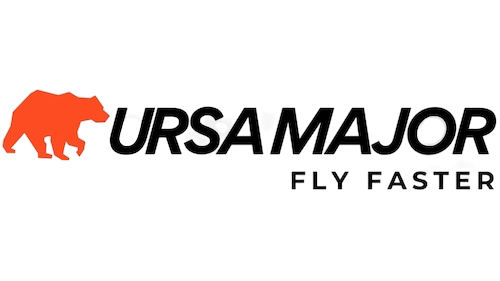Go team training
Go team training
Get your developers up to speed in Go, with my flexible, cost-effective training sessions for all levels from beginner to pro.
Live training
My live, remote, instructor-led Go training for teams is Go is one of the most popular programming languages in the world, and it’s specifically designed to be easy to learn, simple to understand, and quick to master. You can be productive with Go in less time than almost any other language, yet it doesn’t compromise on performance, flexibility, or safety. It’s ideal for large teams, big projects, and web-scale applications. Go is the native language of the cloud and containers, and it’s the first choice for microservices, Kubernetes apps, and high-performance servers.
My training is the fastest and most cost-effective way to get your developers up to speed, and ready to be productive with Go. They’ll gain valuable insider knowledge, learn best practices, and be able to take full advantage of the immense power of Go for developing applications, tools, systems, and services.
Well-trained Go developers are a key competitive advantage for any company. A textbook or online course is okay, but nothing compares to hands-on, in-person instruction by an experienced Go teacher. They can quickly and easily introduce the core concepts, explain the Go advantage, identify best practices, provide guidance for beginners and intermediates, and give senior developers a deeper and more nuanced understanding of how the language works under the hood.
By popular request, I’m now offering live training sessions in Go for teams, to help them get up to speed with Go development, testing, and building complex applications. For teams mostly new to Go, I’ll cover the language fundamentals, patterns, and practices. For those with a little more experience, I can advise on project structure, testing strategy, writing idiomatic Go, error management, and other tricky issues. For advanced teams, I can provide valuable insights and help based on decades of experience.
I’ve trained developers and teams at Google, VMware, GitHub, HashiCorp, Pivotal, Gruntwork, Nginx, JPMorgan Chase, Facebook, Elastic, Grafana Labs, GoCardless, Cisco, Pythian, Intuit, and dozens of other successful companies all over the world and in every sector of industry. They’ll tell you that my training style is a lot more fun and engaging than the usual boring PowerPoint presentations, because it’s live and interactive: the team will learn, discuss, reflect, Q&A, work on group projects, and take part in “code safari” exercises to build their language understanding and gain experience reading production Go code.
Every team member will also receive a certificate of completion at the end of the course.
Mastering Go
In this course, developers will learn about the key strengths and advantages of Go over competing languages such as C++, Rust, and Python, and the unique features that make Go what it is. They’ll discover why Go is so beloved by programmers, thanks to its lean, concise syntax, and versatile standard library. They’ll also get a thorough grounding in the core topics that every Go developer should know:
Basic Go syntax
What makes Go different?
The Go toolchain
Go support in popular IDEs
Packages and modules
Structured data types and containers
Types, switches, and assertions
The standard library and beyond
Iterators
Generics
Concurrency and goroutines
Benchmarking and profiling
Automated testing
Because every team is different, we can tailor this syllabus to focus on exactly what you need, and take as much or as little time as necessary to get to grips with it.
Your instructor
John Arundel is a consultant, teacher, and writer with over 40 years of experience in the software industry, and a long and successful track record of delivering training to some of the world’s top tech companies. He’s the author of many books on programming and computing topics, including Rust, Go, Puppet, and Kubernetes, a long-time contributor to the Rust language, and the maintainer of several popular open-source software libraries. His book The Deeper Love of Go makes an ideal companion and follow-up to this course.
More resources
See also my individual Go training sessions, books, and tutorials on Go—and please subscribe to my free newsletter for lots more!
How it works
Use the ‘Purchase’ button above to buy your training sessions. Select the number of attendees, and the number of sessions you’d like to start with (you can always add more later if you want to). I’ll contact you by email to say hello, discuss your training requirements, and schedule the sessions.
Customers say…
Gabriel Harris-Rouquette, Senior Software Engineer, Merit International
“Golden nuggets of wisdom”
Having worked with John for a while, his mentorship has brought our team the wisdom and confidence in our ability to author Go. His approach is simple, fun, and welcoming to break down the barriers and focusing on learning what can be applied to work projects. Through real code workshops that allow for guided development, we stumbled on a great many "golden nuggets of wisdom" to become real Gophers. We thoroughly enjoyed the training and have absorbed a test-driven development strategy that continues to endure today.
Adam Przybyszewski, Infosec Team Lead, Edward Jones
“This is exciting!”
We typically do just canned training because it's all that's out there. To have an offering that feels so uniquely tailored to exactly where we need to grow is really awesome.
Gwyn James, Platform Engineering Team Lead, Ursa Major
“I had a blast!”
I enjoyed the training sessions, and I can see my own ambition increasing and my skillset growing. I grew just from having a regular touchpoint that was motivating me to make progress. It helped me appreciate the difference between being a systems administrator thinking in terms of scripts and cli apps, and a software developer thinking in terms of releasable libraries and more rapid iteration.







